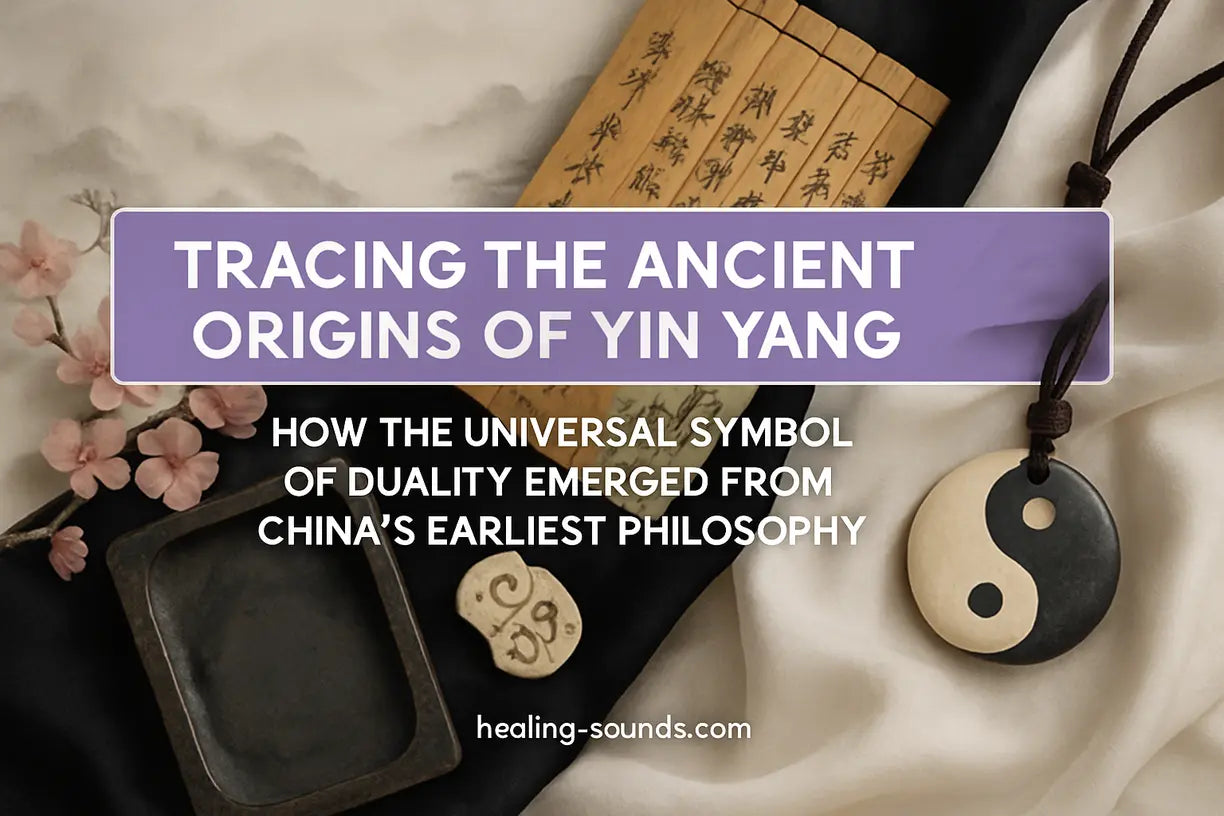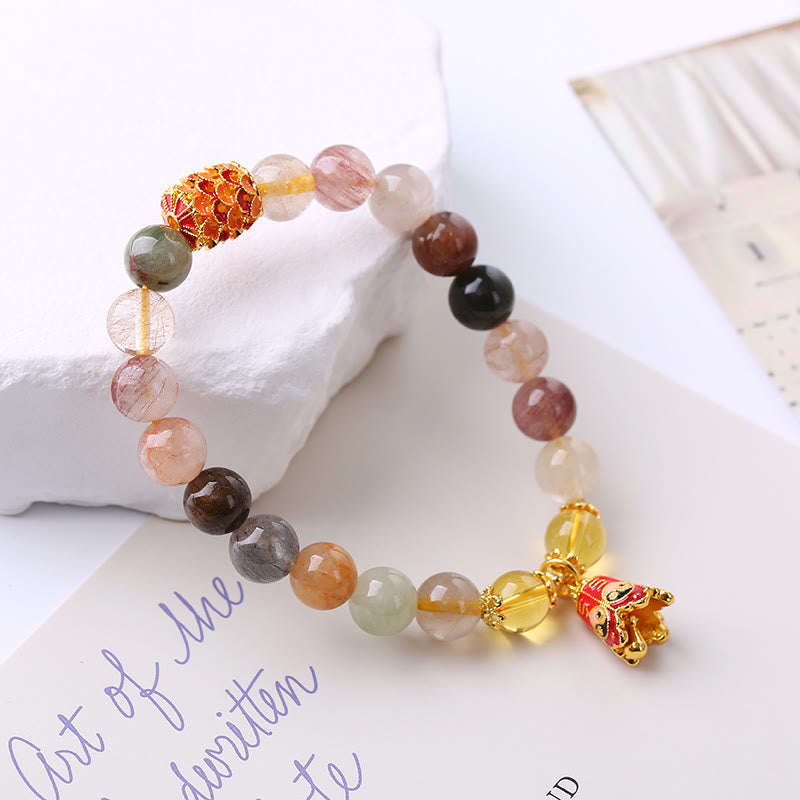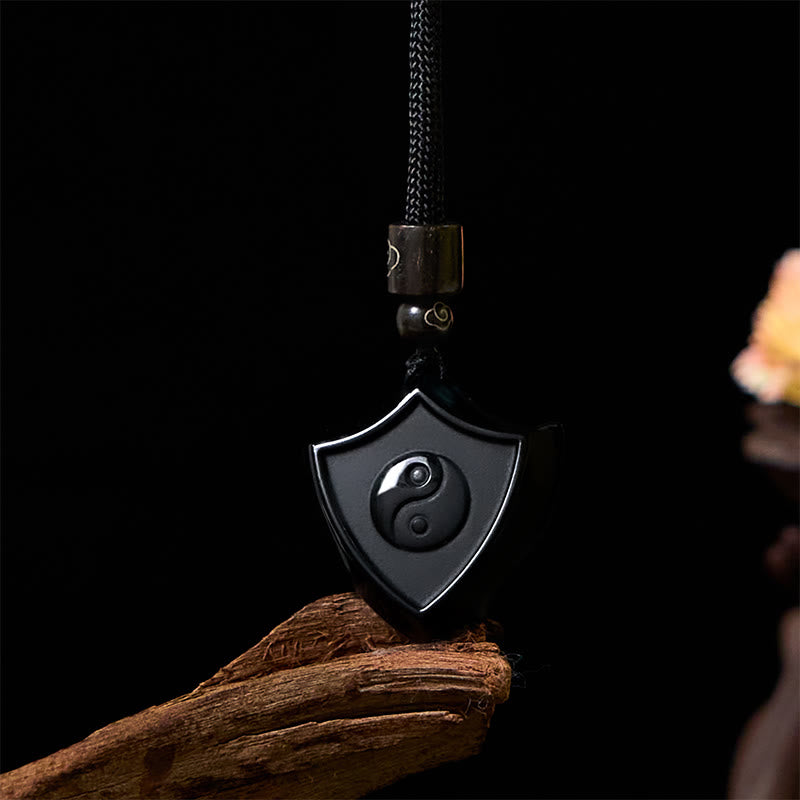 ## When Did the Yin and Yang Concept Emerge?While the observation of duality is timeless, pinpointing the formal emergence of the yin-yang concept takes us back over 3,000 years to ancient China, where it evolved from a simple idea into a sophisticated philosophical system.### Ancient Whispers: Oracle Bones and the I ChingThe earliest written evidence of yin and yang concepts can be traced to the Shang Dynasty (c. 1600-1046 BCE). Diviners used oracle bones for fortune-telling, and the inscriptions hint at an understanding of dualistic cosmic forces. However, the concept truly crystallized in the I Ching, or "Book of Changes," one of the oldest and most important Chinese classical texts, with its earliest layers dating to the 1st millennium BCE. The I Ching is based on a system of 64 hexagrams, each composed of six broken (yin) or unbroken (yang) lines, representing the dynamic balance of forces in any given situation. While it didn't use the exact terms "yin" and "yang" in their later philosophical sense, its entire structure is built on this principle of binary, complementary forces.### The Scholar Who Named It All: Zou YanThe philosopher most credited with systematizing and popularizing the concept is Zou Yan (c. 305–240 BCE), a key figure in the Yin-Yang School (Yinyangjia). Living during the turbulent Warring States period, Zou Yan sought to create a unifying theory to explain everything from the cosmos to human history. He integrated the principles of yin-yang with the theory of the Five Elements (Wood, Fire, Earth, Metal, Water), creating a comprehensive framework. According to the Stanford Encyclopedia of Philosophy, Zou Yan's work elevated yin-yang from a simple naturalistic idea to a cornerstone of Chinese intellectual thought, influencing medicine, politics, and alchemy for centuries to come.
## When Did the Yin and Yang Concept Emerge?While the observation of duality is timeless, pinpointing the formal emergence of the yin-yang concept takes us back over 3,000 years to ancient China, where it evolved from a simple idea into a sophisticated philosophical system.### Ancient Whispers: Oracle Bones and the I ChingThe earliest written evidence of yin and yang concepts can be traced to the Shang Dynasty (c. 1600-1046 BCE). Diviners used oracle bones for fortune-telling, and the inscriptions hint at an understanding of dualistic cosmic forces. However, the concept truly crystallized in the I Ching, or "Book of Changes," one of the oldest and most important Chinese classical texts, with its earliest layers dating to the 1st millennium BCE. The I Ching is based on a system of 64 hexagrams, each composed of six broken (yin) or unbroken (yang) lines, representing the dynamic balance of forces in any given situation. While it didn't use the exact terms "yin" and "yang" in their later philosophical sense, its entire structure is built on this principle of binary, complementary forces.### The Scholar Who Named It All: Zou YanThe philosopher most credited with systematizing and popularizing the concept is Zou Yan (c. 305–240 BCE), a key figure in the Yin-Yang School (Yinyangjia). Living during the turbulent Warring States period, Zou Yan sought to create a unifying theory to explain everything from the cosmos to human history. He integrated the principles of yin-yang with the theory of the Five Elements (Wood, Fire, Earth, Metal, Water), creating a comprehensive framework. According to the Stanford Encyclopedia of Philosophy, Zou Yan's work elevated yin-yang from a simple naturalistic idea to a cornerstone of Chinese intellectual thought, influencing medicine, politics, and alchemy for centuries to come. ## The Birth of the Taijitu: Crafting the Iconic SymbolInterestingly, the familiar black and white yin-yang symbol, known as the Taijitu (太極圖), appeared much later than the philosophy it represents. While the ideas are over 3,000 years old, the symbol's definitive form is closer to 1,000 years old. It was developed during the Song Dynasty (960–1279 CE), a period of great intellectual and spiritual revival in China.Taoist philosophers, most notably Zhou Dunyi (1017–1073), were instrumental in creating and popularizing the Taijitu. They sought a visual diagram to explain their complex cosmology, starting from the ultimate void (Wuji) giving birth to the supreme ultimate (Taiji), which in turn manifests as the duality of yin and yang. The symbol was a perfect, elegant map of this cosmic process.Wearing a piece that reflects this profound history can be a powerful reminder of the balance we seek in our own lives. It connects us to the thousands of years of wisdom encapsulated in this simple, elegant form.
## The Birth of the Taijitu: Crafting the Iconic SymbolInterestingly, the familiar black and white yin-yang symbol, known as the Taijitu (太極圖), appeared much later than the philosophy it represents. While the ideas are over 3,000 years old, the symbol's definitive form is closer to 1,000 years old. It was developed during the Song Dynasty (960–1279 CE), a period of great intellectual and spiritual revival in China.Taoist philosophers, most notably Zhou Dunyi (1017–1073), were instrumental in creating and popularizing the Taijitu. They sought a visual diagram to explain their complex cosmology, starting from the ultimate void (Wuji) giving birth to the supreme ultimate (Taiji), which in turn manifests as the duality of yin and yang. The symbol was a perfect, elegant map of this cosmic process.Wearing a piece that reflects this profound history can be a powerful reminder of the balance we seek in our own lives. It connects us to the thousands of years of wisdom encapsulated in this simple, elegant form.
5.5-6.3 inch Rutilated Quartz Yin Yang Balance Bracelet
$27.90 $39.90
Wear a symbol of yin yang's ancient balance and protection as you explore its legendary Chinese origins.
Explore Product- Duality and Interdependence: Yin (black, feminine, passive, dark) and Yang (white, masculine, active, light) are not in conflict. The flowing line between them shows they are mutually dependent; one cannot exist without the other.
- Dynamic Balance: The symbol is not static. It depicts a constant, flowing movement, signifying that the balance between these forces is always shifting and changing. As one grows, the other recedes, maintaining an overall equilibrium.
- The Seed of the Opposite: The small dot of the opposite color in each swirl is perhaps the most profound element. It teaches that nothing is ever 100% yin or 100% yang. There is always a trace of darkness in the light, and a spark of light in the darkness. This represents the potential for transformation and the interconnectedness of all things.
 This rich symbolism allows us to carry the story of yin yang with us. Jewelry and amulets become more than just accessories; they become touchstones to a legacy of balance and harmony, connecting our modern lives to the deep traditions of ancient China.
This rich symbolism allows us to carry the story of yin yang with us. Jewelry and amulets become more than just accessories; they become touchstones to a legacy of balance and harmony, connecting our modern lives to the deep traditions of ancient China.Wear the Legacy of Balance
Carry the yin yang’s foundational harmony and Chinese heritage with this intricately detailed pendant. Learn more ➔
Embody yin yang’s duality and deep Chinese traditions with this protective obsidian balance pendant. Learn more ➔
Frequently Asked Questions about the Origin of Yin Yang
Yin yang originated in ancient China. The philosophical concept dates back over 3,000 years, with its roots in observations of nature and its formalization in texts like the I Ching and by philosophers like Zou Yan in the 3rd century BCE.
No, yin yang did not come from Japan. It is a concept of Chinese origin. It was later adopted and integrated into Japanese culture and philosophy, particularly in esoteric schools like Onmyōdō, but its historical roots are firmly in China.
The yin yang symbol, or Taijitu, represents several deep meanings: duality and interdependence (complementary forces, not opposing), dynamic balance (a constant flow and transformation), and the idea that nothing is absolute (the dot of the opposite color in each half).
The iconic black and white yin yang symbol, known as the Taijitu, emerged much later than the philosophy. It was developed and popularized by Taoist philosophers during the Song Dynasty in China (960–1279 CE), making the symbol itself about 1,000 years old.
The concept of yin and yang is over 3,000 years old. Its earliest traces can be found in Chinese oracle bone inscriptions from the Shang Dynasty and the foundational text of the I Ching, which date back to the 1st millennium BCE.









